In-Depth – The F.P. Journe Vagabondage III (And The History Of The Vagabondage Series)
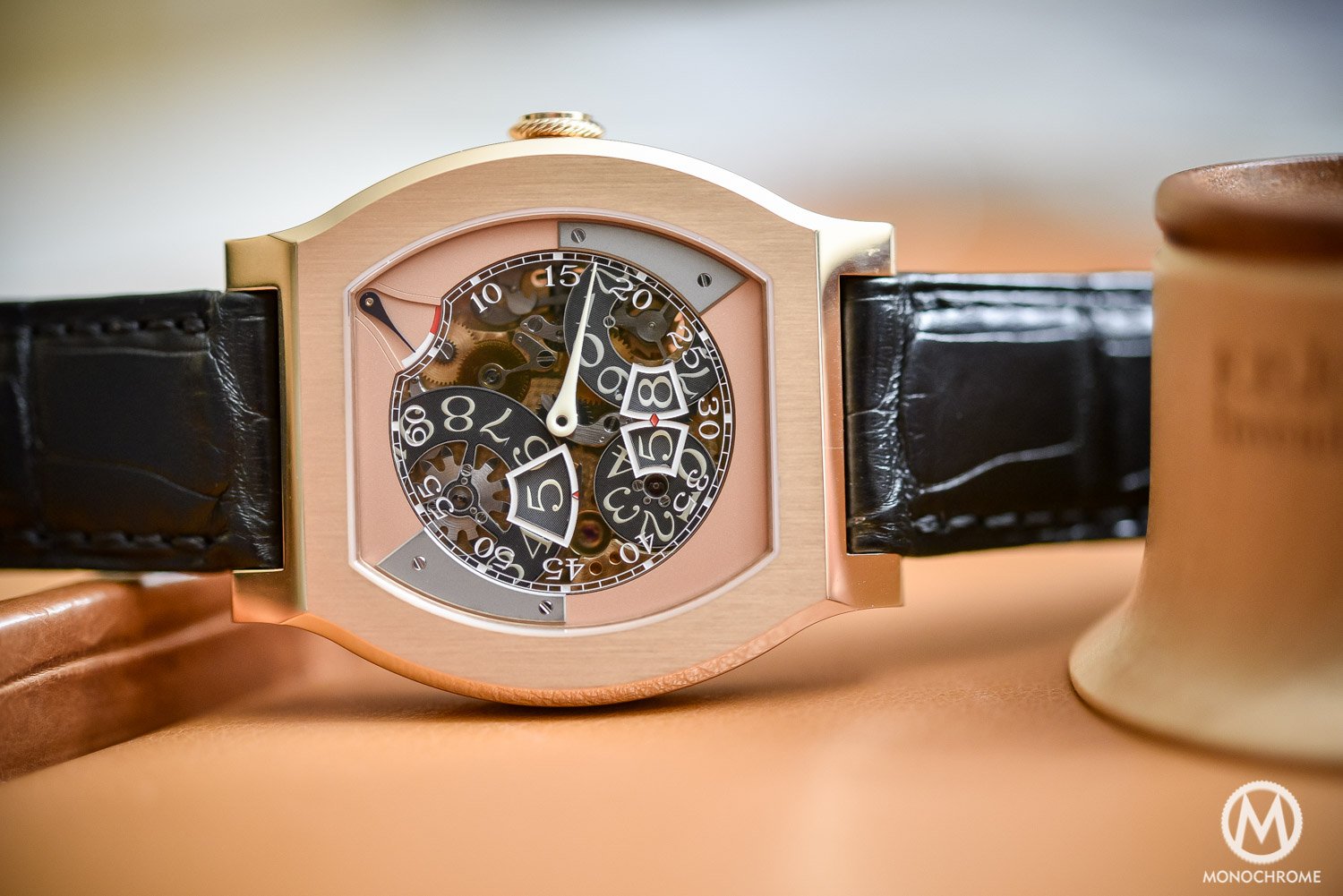
François-Paul Journe has always been a bit apart in the watchmaking industry. Yet, most of his watches are easily recognizable and are imbued with a clear, distinctive DNA. However, a specific series of watches does not respect the rule; the Vagabondage watches. Entirely different case, entirely different displays, entirely different philosophy… 2017 marks the arrival of a third tortue-cased watch, the F.P. Journe Vagabondage III (which we already showed to you in video here). A splendid watch and the first-ever mechanical watch with digital jumping-seconds. And today, we take a closer look at it.
A series of three watches, as a journey through time
The story of the Vagabondage series of watches is slightly atypical. Never these watches have been regular products and the start of the journey itself is rather special. First of all, why this name (which might sound quite weird for non-French speakers)? In fact, “vagabondage” is a French word that could be translated by “vagrancy” or “wandering“. By that, François-Paul Journe wanted to express a sort of digression and journey of his mind through a different way to display the time, with a unconventional watch, both for display and for the style of the watch itself (which is shaped differently than the rest of his production).
- The F.P. Journe Vagabondage I – Digital Hours
The Vagabondage Series started with 3 watches. No more. Before the very existence of the Vagabondage I, F.P. Journe did indeed create 3 unprecedented watches with a flat Tortue case (patented model – the unofficial story says that this case was first designed for Cartier, which refused it), a digital / wandering time display and a dial without signature (this non-signed dial will remain part of the spirit of the Vagabondage watches later), for the 30th anniversary of Antiquorum (thus in 2004) Journe produced 3 Unique Pieces (one in white Gold, one in yellow Gold, and one in rose Gold), and all with brass movement. Antiquorum auctioned them in favor of ICM, a Paris-based research facility specializes in the fight against brain and spinal cord diseases. These 3 watches captured the interest of the public, and sold for three times the estimate (63,250 CHF for the white gold, 66,700 CHF for the yellow gold, 80,500 CHF for the pink gold)
Original Catalogue photos of the 3 first Vagabondage I Watches
After these three watches Journe created two Limited Editions that where made between 2005 and 2006: a 10-piece limited edition in platinum and set with baguette diamonds, and a 69-piece limited edition of the same watch but then without diamonds. Both feature movements in 18k gold, something François-Paul Journe is now known for. Apart from the usual Tortue case and the non-signed dial, the Vagabondage I also featured a very unexpected display, something that Journe never did before – even the architecture of the movement was rather special. Prominent in the middle of the dial is the regulating organ, which oscillates at a rate of 21.600 beats per hour. This is a regular escapement without a tourbillion carriage fitted (not to be confused with some other watches with central tourbillon).
Second series of the F.P. Journe Vagabondage II – Credits: Phillips
The time display of the Vagabondage I is what Journe calls “wandering” (which might explain the name of the watch…). It is based on first a jumping hour. A window “catches” an hour printed on a rotating discs. Then, these two (the upper disc with the white window and the black disc with the hours) will travel all around the dial for the coming hour, pointing the minute on a classical track on the periphery. The result is indeed simple and legible, yet the technical solutions are far from being easy to implement. Yet, François-Paul went further again with a second watch, the Vagabondage II.
- The F.P. Journe Vagabondage II – Digital Jumping Hours and Minutes
The second Vagabondage edition was created in 2010 – 69 pieces in Platinum, 68 pieces in red Gold and 10 pieces in Platinum with baguette diamonds are produced. This Vagabondage II is a different vision of the “wandering” / “vagrancy” idea of the time. Instead of a digital jumping and wandering hour, François-Paul Journe created a watch with jumping indications, both for the minutes and the hours, with the help of three independent discs. In addition, the Vagabondage II featured a small second sub-dial and a power reserve.
F.P. Journe Vagabondage II – Credits: Phillips
The 18k gold movement was partially visible behind a smoked sapphire crystal on the dial side. It was a manually-wound calibre, this time with classically-poistioned regulating organ (no more in the center of the dial anymore, but on the back of the watch). The indication were all enlighten by a silvered-bridge on top. Because of the complexity of these indications and the issue of power management, Journe had to develop a specific barrel and a remontoir d’égalité, providing better energy management for the instantaneous jump of the minutes and hours (a remontoire isolates the torque going to the balance from the variations in the going train caused by jumping the disks).
After that, we had to wait 7 more years to see the resurgence of the Vagabondage concept, again another display and digression on the way to indicate the time. This watch is the F.P. Journe Vagabondage III, it is massively beautiful and technically impressive, as being the first-ever mechanical watch with digital jumping-seconds.
The F.P. Journe Vagabondage III – Digital Jumping Hours and Seconds
Such a watch deserves to be seen in action, thus the video below will give you a better appreciation of the display and the works of this Vagabondage III.
Before going into all the details of this watch (and there are many), it has to be says; this Vagabondage III is a superb watch, both visually and technically. It combines a great elegance (not a surprise…), a strong technical content (expectable from François-Paul Journe) and enough “controlled originality” to be seen as a real “indie watch”, without being too offensive. So what is the F.P. Journe Vagabondage III? It is the third iteration in a series of watches that has to be seen apart from the rest of the standard collection. As you can see, it is the same vein as the previous one; same tortue case, same overall style for the dial and a same idea of the indication of the time, based on jumping discs, with digital indications. However here, it brings something new (and unprecedented), a digital jumping second display. It’s a world’s first, and believe us, if it has never been done before, it is because achieving this complication was a real technical challenge.
- The design and looks of the F.P. Journe Vagabondage III
No drama here, the third version of this watch is in all points faithful to the other watches. Just like the watches Journe introduced in 2004 and 2010, the case is based on a flat tortue shape. The dial and the bezel are on a same flat level, while being surrounded by a large polished bevel that creates the casebands and the lugs. The contrast between the brushed surface of the bezel and the high-gloss polishing of the surroundings does emphasize this specific and elegant shape (which is patented by Journe). The case is rather small on paper, as measuring 45.2mm x 37.6mm. Yet, as always with shaped-watches, the dimensions are to be considered differently. Such watches have a different presence on the wrist, as confirmed again with the Vagabondage III. Yet, it remains perfectly wearable as a dress watch, even with this distinctive shape that immediately set it apart.
One surprising specification about this watch is about thickness. Indeed, with such a technical content, you could imagine it to be rather thick. You’d be wrong. The Vagabondage III measures only 7.84mm, making extremely well balanced on the wrist, elegant and wearable as a tuxedo watch. This case’s height is even more impressive when you consider the thickness of the movement (5.88mm), meaning that the case and its sapphire crystals have been reduced to the minimum, in order to conserve a sleek profile. Many watches with a 3mm thick movement don’t achieve an overall thickness of 8mm, which makes the Journe pretty well conceived.
The Vagabondage III comes in two tastes: a cold, almost technical looking 950 platinum version, with matching dial (69 pieces in Pt) and a warm, very precious 18K red gold version, again with a matching dial (68 pieces in gold). The execution and assembly of the case are very precise, refined and pleasant. No debate about the serious of the craftsmanship. Both version come on a discreet black alligator leather strap with folding buckle matching the case.
- The display of the F.P. Journe Vagabondage III
This where the story begins to be properly interesting for us, watchnerds. The F.P. Journe Vagabondage III indeed features an unprecedented complication, the first digital jumping second in a mechanical watch. Indeed, if jumping hours and jumping minutes are features that have already been implemented (especially the jumping hour, which is an almost regular complication), the jumping seconds has never been applied in a mechanical watch. We’ve seen some attempts, for instance on the Harry Winston Opus 3 (conceived by Vianney Halter, completed by Renaud Papi), but it was only a jumping seconds countdown for the last four seconds of each minute. The Vagabondage III does it in a continuous way. Why is it the first mechanical watch with such display? The answer is mainly about energy management and reliability.
In classical mechanical watches, the seconds are displayed via a hand, which rotates once per minute and that is driven directly by the second’s wheel and the second’s pinion. This wheel and its pinion are driven themselves by the escape wheel, making it directly integrated into the movement, without the need of an extra gear train (at least in most watches). Furthermore, because it is a hand, it is light. Finally, because it rotates constantly, it doesn’t consume much energy. However, for jumping indications, there must be a storage of energy and a release at a precise moment to create the jump. For instance, when it comes to jumping hours, a spring is tensed during an hour and when it reaches a certain tension, the energy will be released, making the disc jump.
For the Vagabondage II, because the jumping indication was the minute, Journe decided to add a remontoir d’égalité, which stored energy during one minute and released it to make the disc jump. One minute was long enough to store energy without affecting the chronometry of the watch. Indeed, making a disc jump requires quite some force, and that interval of time was rather long. Yet, when it comes to the jump of a disc every second, the deal becomes quite complex.
For the Vagabondage III, Journe relies on the same kind of construction, with a remontoir d’égalité, which is however regulated to release its power every second. Yet, this is complex, simply because the interval of time to store energy is short (only 1 second) and that necessarily requires to catch a lot of energy directly on the gear train. For that, the movement relies on a long blade spring, capturing and releasing a defined amount of energy every second, just enough to make the disc jump. This remontoir also allows to maintain a constant amplitude in the balance wheel. The other disc, the one that manages the tenth, is driven directly by the main seconds disc and has no mechanical link with the movement. Besides this complex mechanism and the difficult energy management of the Vagabondage III, the movement stores an approximate 40-hour power reserve (longer than the 30 hours of the Vagabondage II). This is due to the single barrel that encloses two springs instead of one.
The rest of the display is based on an asymmetrical architecture, with a jumping hour disc (enlighten by a trapezoidal window at 9h30) and a classical minute hand rotating once per hour, with a round minute track circling the dial. Finally, a power reserve indicator sits outside the smoky dial at 1. The layout somehow recalls the recent Elegante 48, with the integration of a round dial into the tortue-shaped window (even the shape of the case is used on this watch).
There’s no doubt to have. This display with digital jumping second is captivating. It gives the Vagabondage III a constant activity and makes you look at it for several seconds with no reason at all, expect contemplating the ballet of the seconds disc. On that point, it is a real success. Now, the only concern we have is about reliability. Indeed, such a mechanism is complex, fragile and could potentiality create frictions and wear on the parts (I said potentially). The two watches we handled were perfectly functional and we imagine that Journe intensively tested the watch.
- The movement of the F.P. Journe Vagabondage III
The movement of the Vagabondage III is based on the one of the Vagabondage II, yet highly modified to integrate the jumping second function and the new display. The positioning of some basic elements are the same (balance, escapement, barrel and gear train) and the layout of the bridges is rather close. Yet, this movement (Calibre 1514) has been deeply modified to have a one-second remontoir d’égalité, a new barrel and a brand new top module to drive the display. As said, power reserve is approximately 40h and the escapement beats at 21,600vph, with a variable inertia balance wheel.
In the vein of all movements made by Journe, bridges and main-plate are manufactured from 18k pink gold and decorated with great care: circular grained base plate, Geneva waves on bridges, chamfered and polished bevels, polished screw heads, chamfered slots… The best comes from the shape, as the movement has been conceived accordingly to the shape of the case, and from its thickness, below 6mm.
- Conclusion
The F.P. Journe Vagabondage III is an impressive watch, which feels achieved, mainly because it manages to continue the series and to make it evolve in a technical way, without any loss of elegance and distinction. it is a perfectly written copy, which combines technical content, mechanical achievement, a controlled eccentricity and exclusivity. Indeed, this watch is exclusive, not only because of its price (54,000 Swiss Francs in red gold, 56,000 Swiss Francs in platinum), not only because of its limited production (69 pieces in platinum, 68 pieces in red gold) but mainly because of the way it will be available for collectors.
Indeed, priority will be given to owners of the two first editions of the Vagabondage, who will be able to aquire the watch with the identical limited series number and metal. Collectors will have to prove ownership, by showing the watch to the boutique. Then, if some watches are not sold this way, other collectors will be allowed to get one. Exclusive indeed. www.fpjourne.com.
Specifications of the F.P. Journe Vagabondage III
- Case: 45.2mm x 37.6mm x 7.84mm – 950 platinum or 18k red gold, polished and brushed – sapphire crystal on both sides
- Movement: calibre 1514, in-house – manually wound – 40h power reserve – 3Hz frequency – Barrel with double spring, one-second remontoir d’égalité
- Display: digital jumping hours, minutes, digital jumping seconds, power reserve
- Strap: alligator leather strap with folding clasp

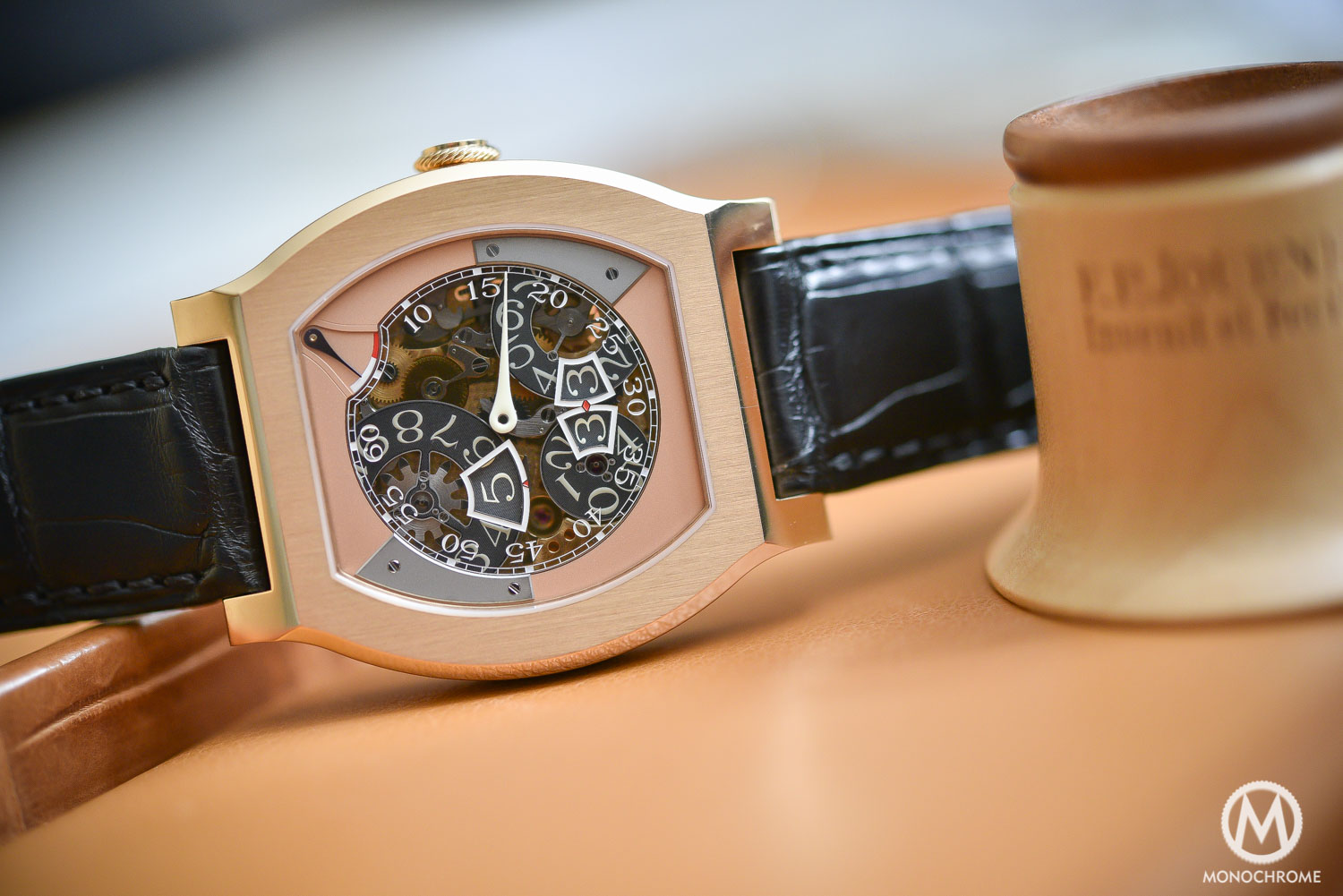


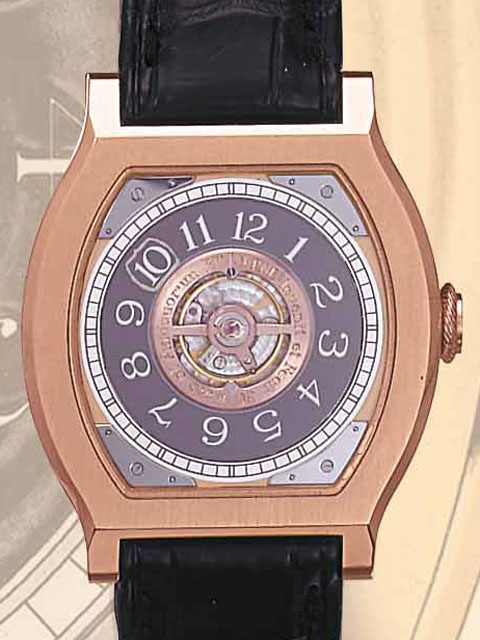
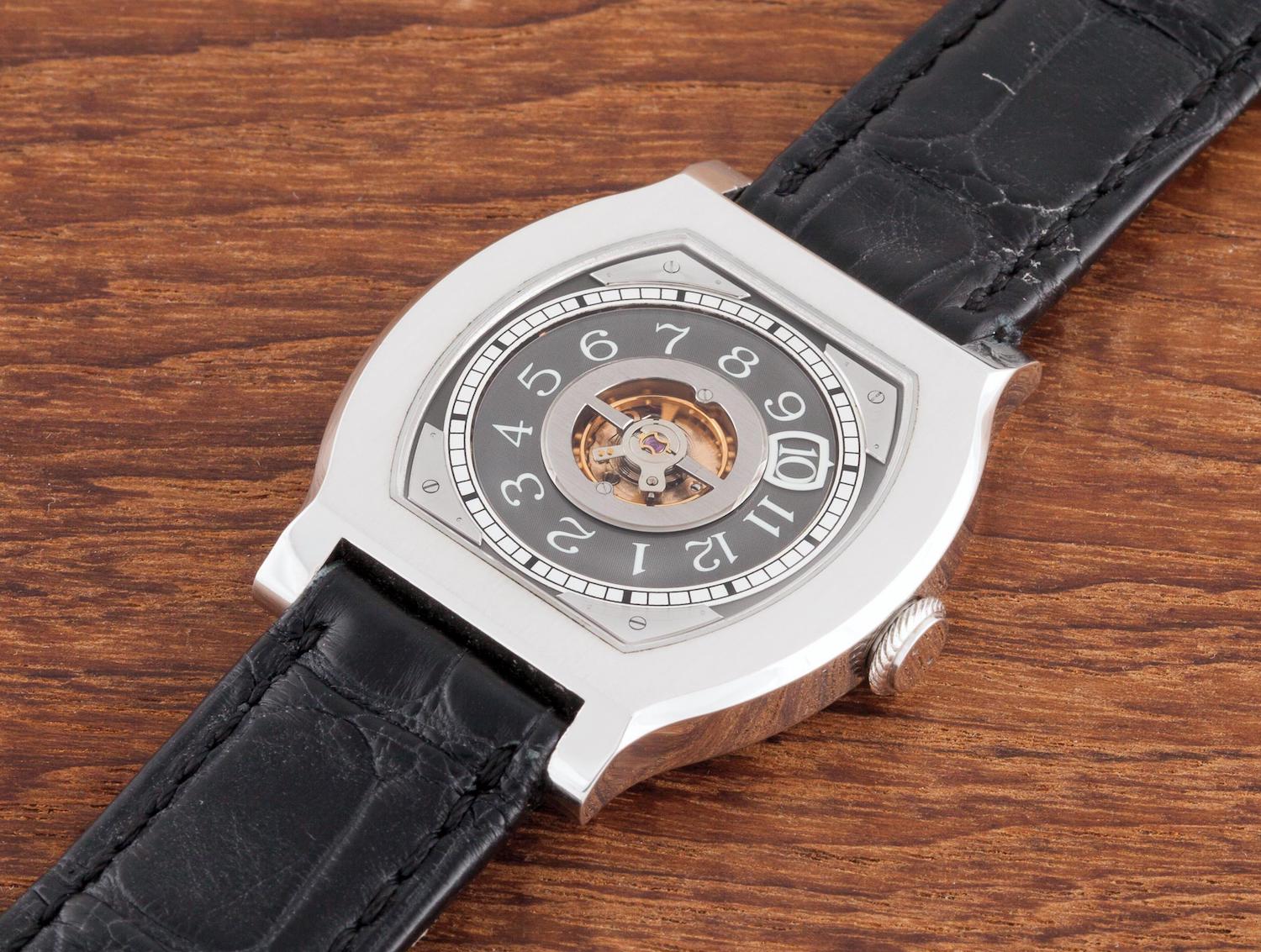

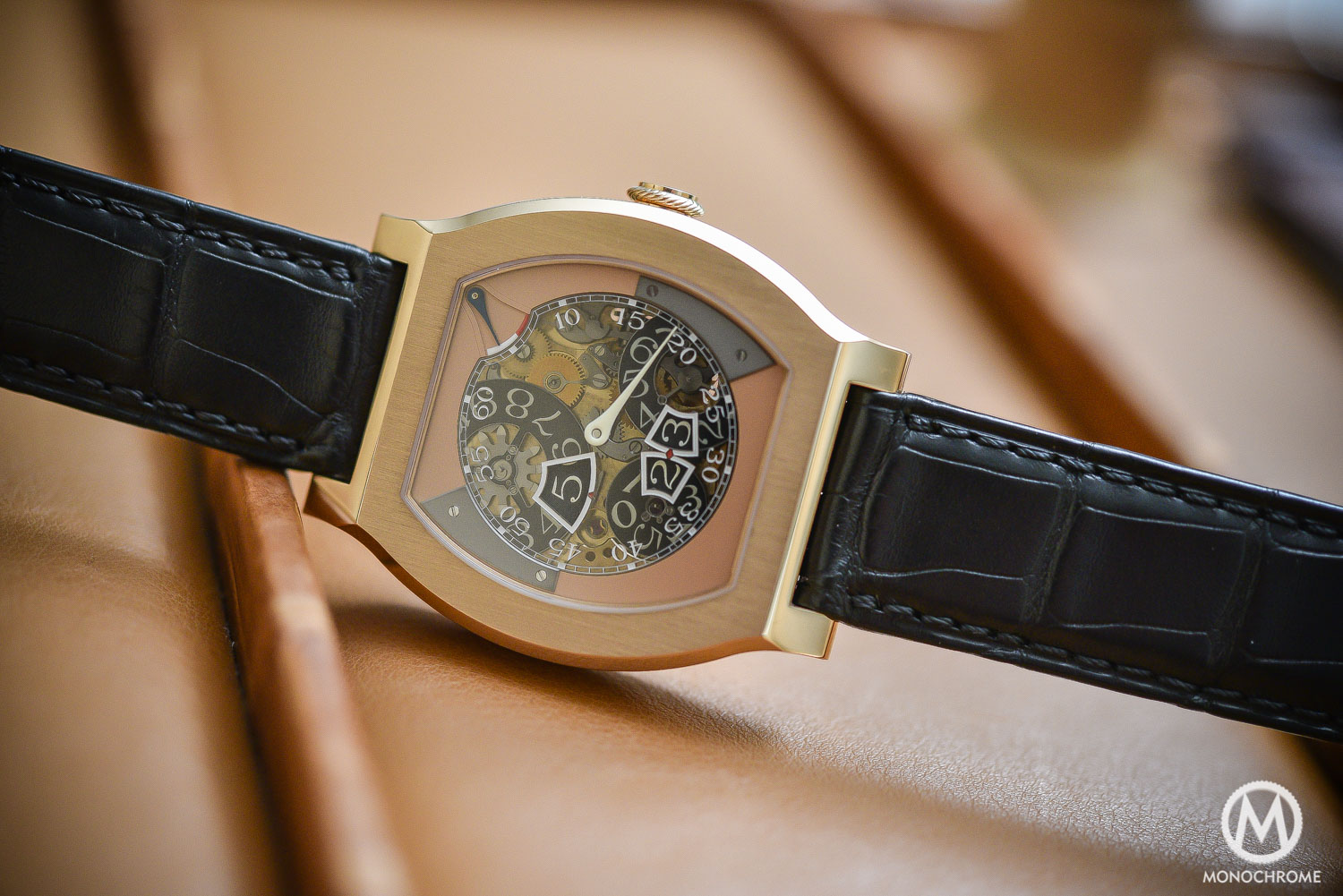
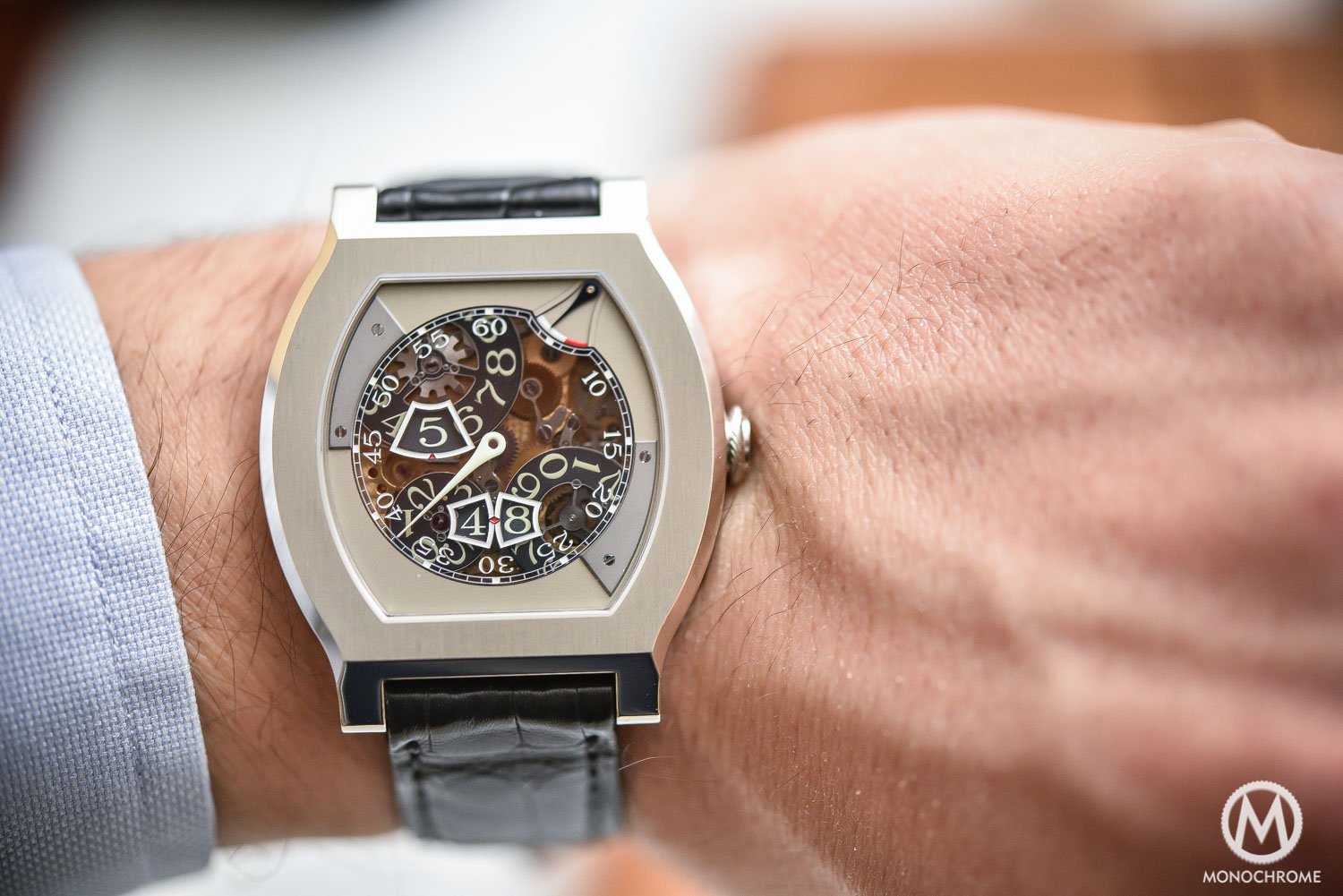
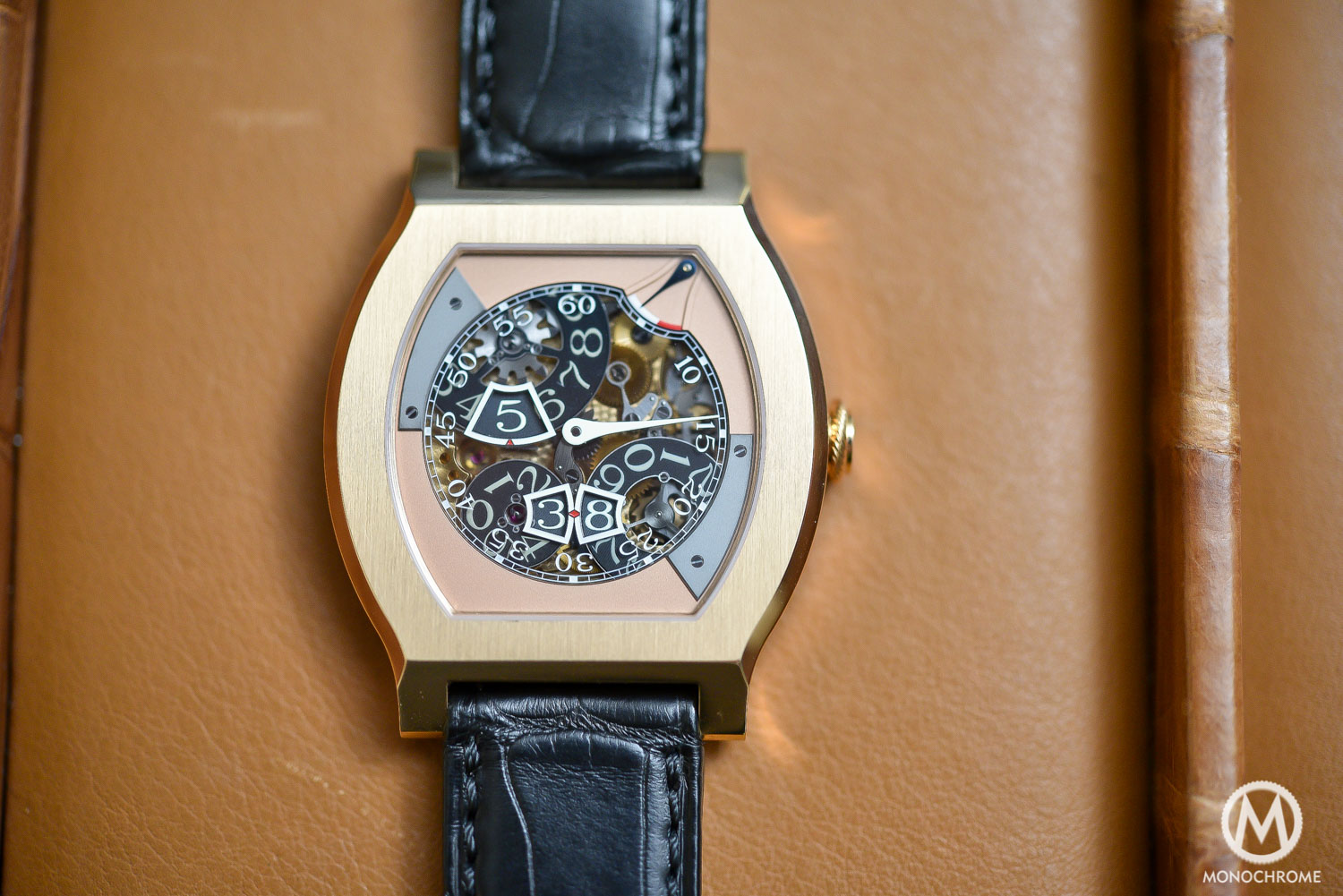

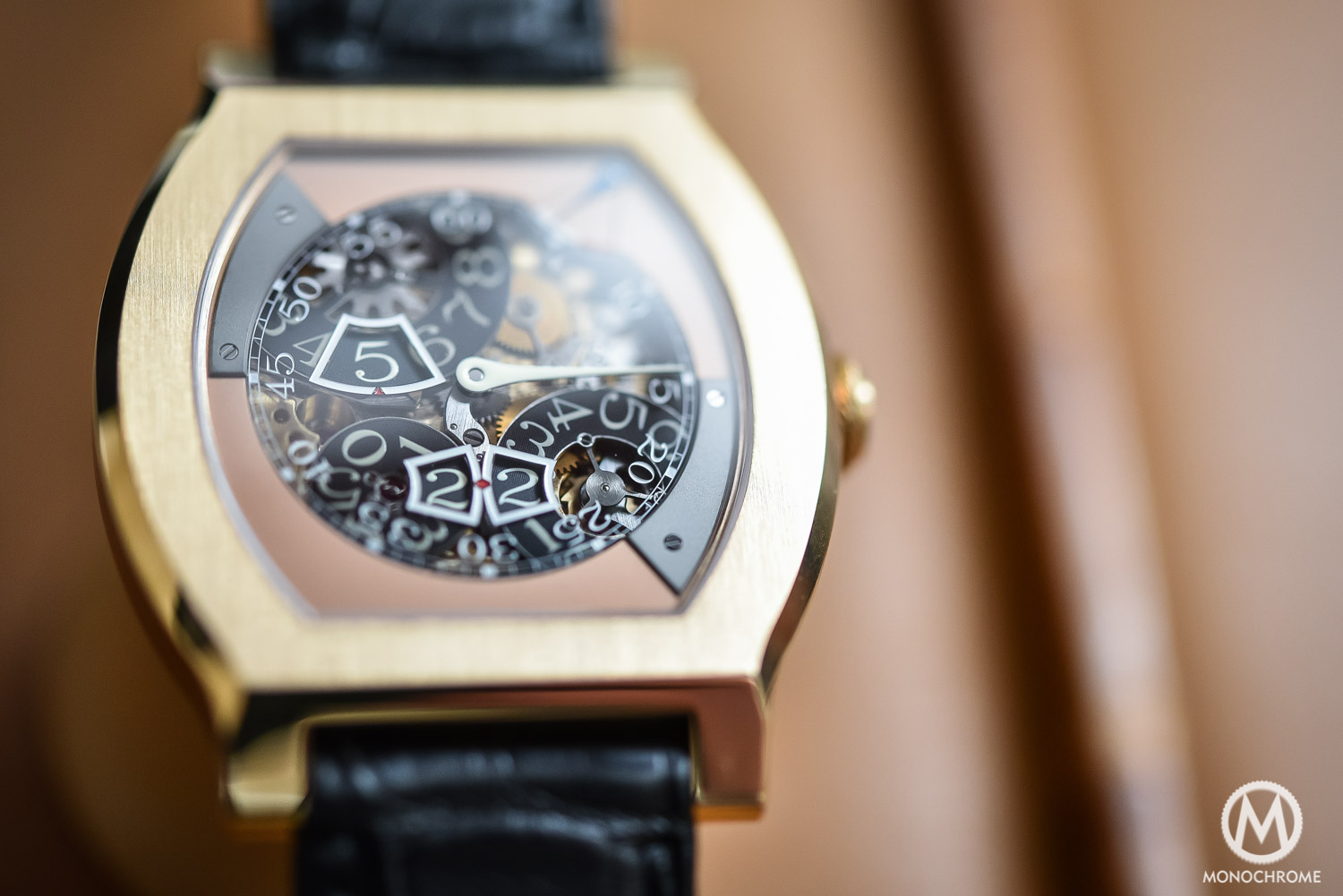

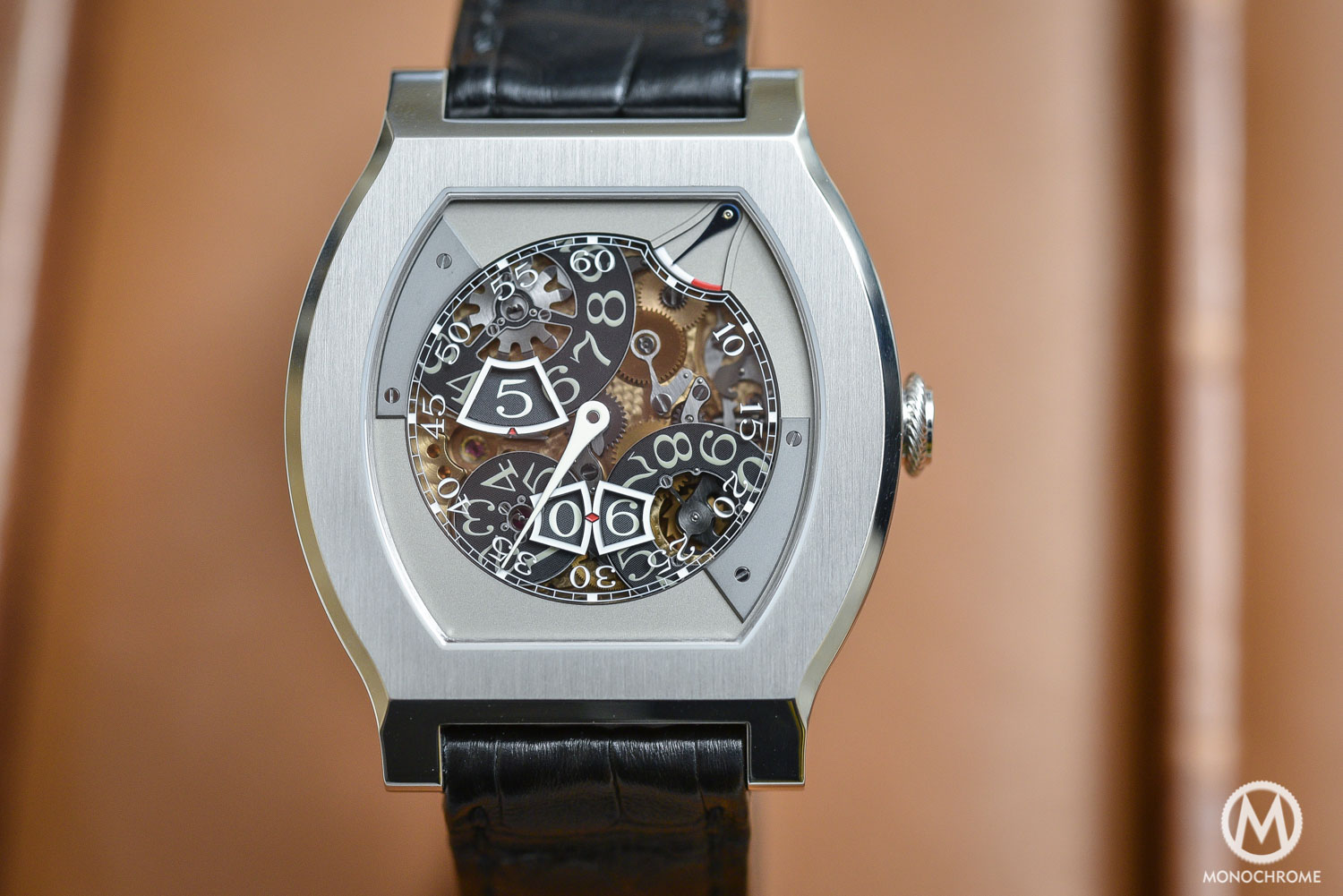

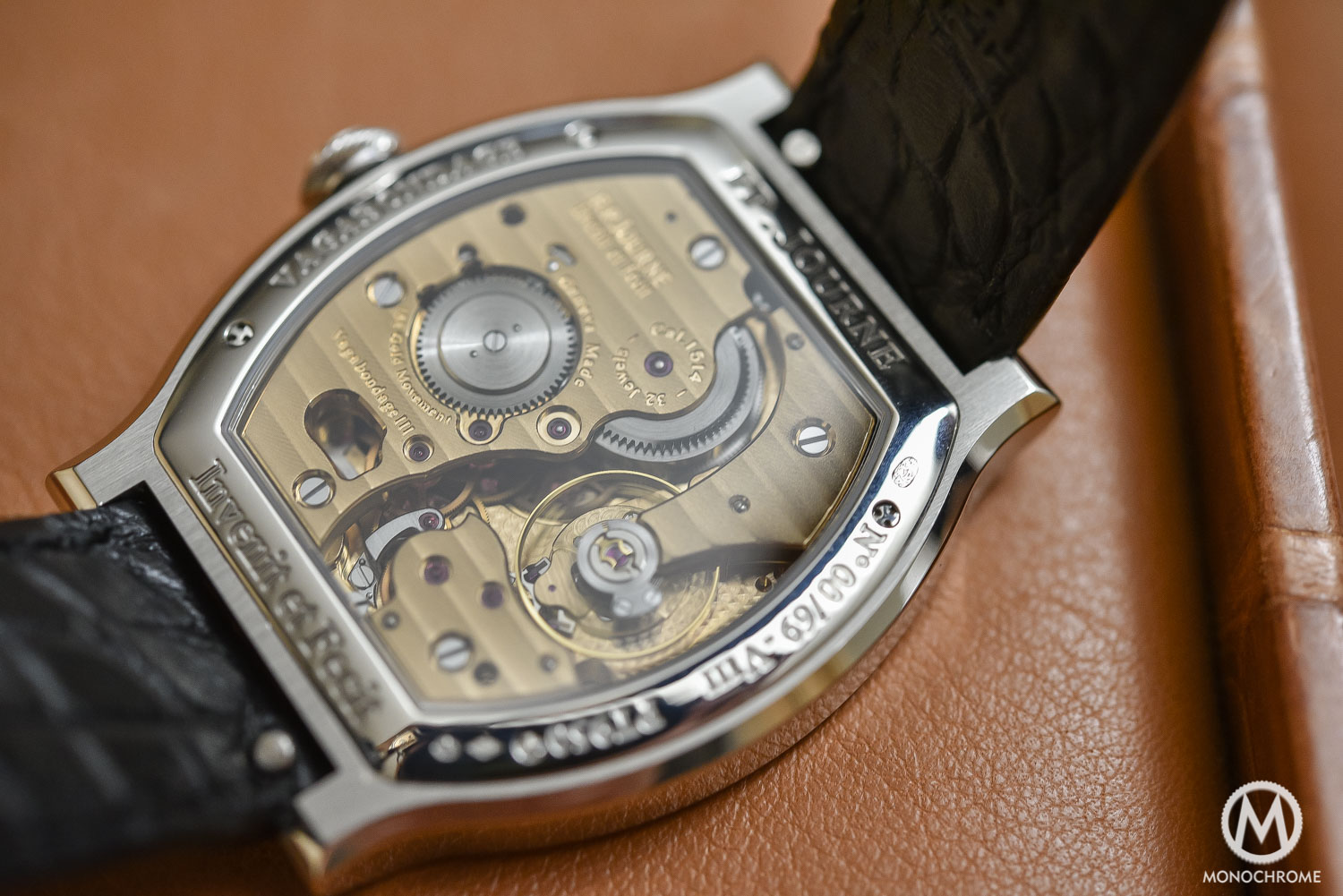
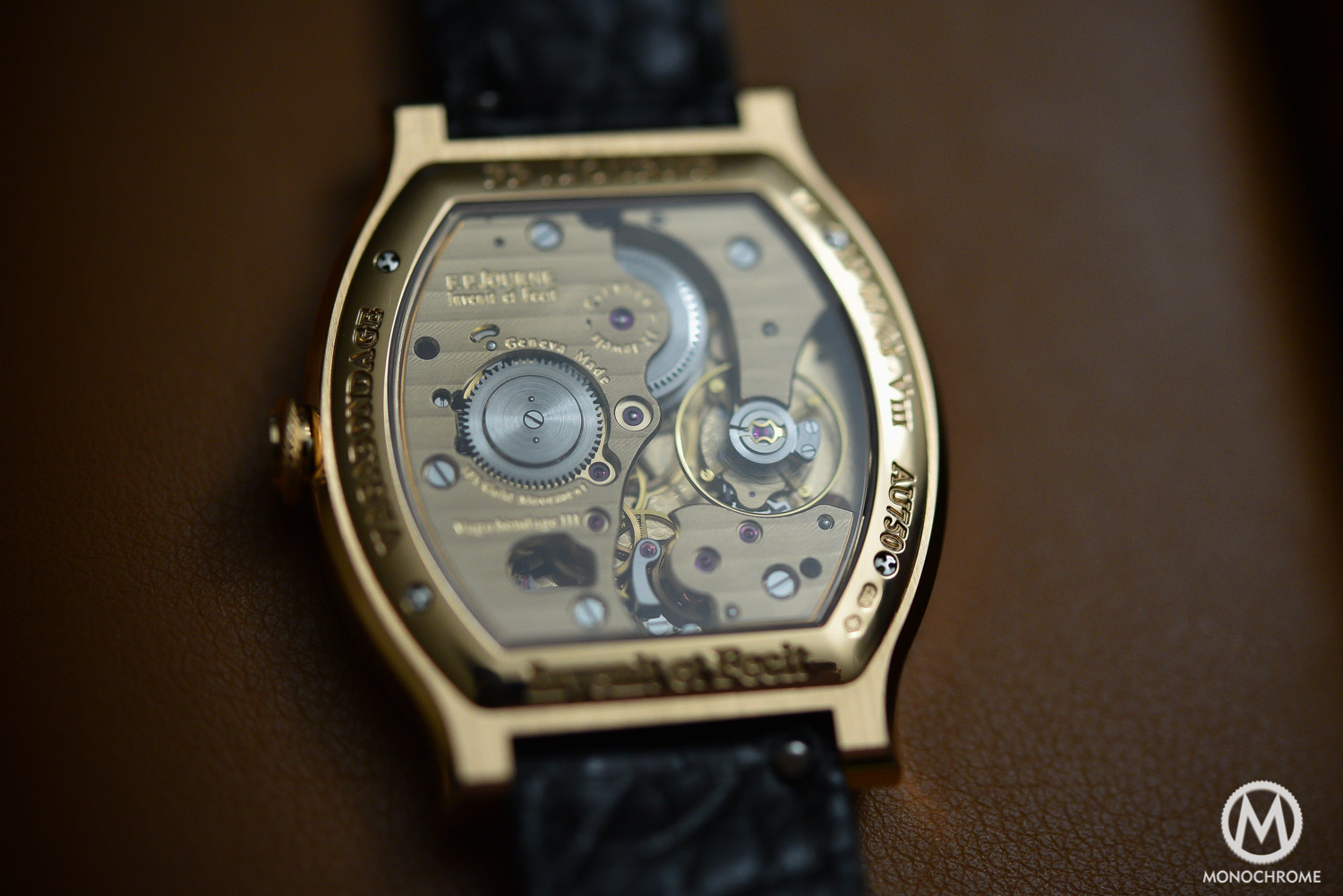



1 response
Hi Brice,
a beautiful piece, with a lot of tech content as we would expect from Journe, and with a display which makes it fresh and traditional at the same time – at least to me.
Regards,
slide68